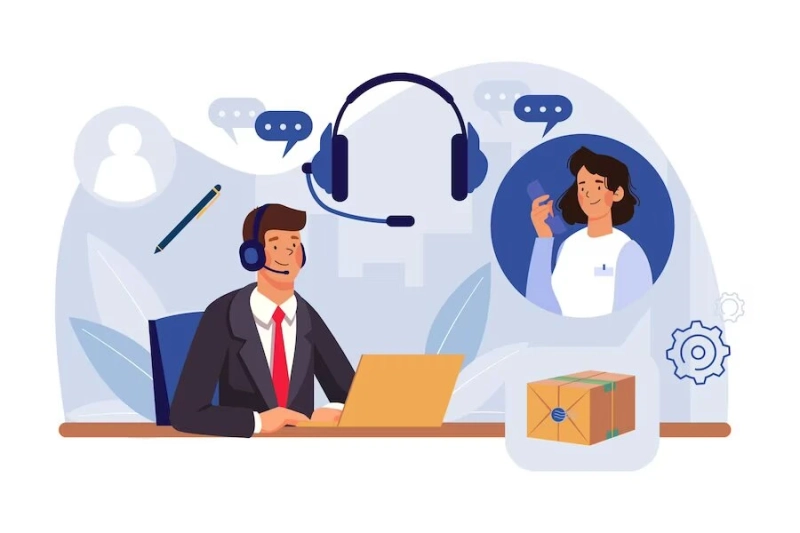Language interpretation services are essential in binding linguistic divides, enabling effective communication, and fostering understanding across diverse cultures and languages. In our increasingly interconnected world, where globalization has become a driving force, the need for professional interpreters has soared. This comprehensive guide explores the significance, types, applications, and pivotal role of interpreters in various domains, highlighting their positive impact on global communication.
Understanding The Term
It is the process of facilitating oral communication between individuals who speak different languages. Interpretation services encompass a broad spectrum of methods, from simultaneous and consecutive interpretation to on-site and remote interpreting, each tailored to meet specific communication needs.
Listing Down the Types:
- Consecutive: In this method, the interpreter speaks after the speaker pauses to allow the interpretation. The speaker conveys a few sentences or ideas, and the interpreter then reproduces the message in the target language. It is often used in smaller meetings, interviews, and court proceedings.
- On-Site: It involves the interpreter being physically present at the location where communication occurs. This method benefits business meetings, medical appointments, legal proceedings, and more.
- Simultaneous: It involves rendering the speaker\'s words into the target language in real-time. Simultaneous interpretation services work in soundproof booths, listening to the speaker through headphones and delivering the interpretation through a microphone almost simultaneously. This method is standard in large conferences, international events, and meetings.
- Remote: With technological advancements, it has gained significant traction. It involves interpretation conducted over the phone or through video conferencing, allowing for flexibility and accessibility in various settings, including virtual meetings, telehealth, and customer support services.
Where is it Applicable?
- Business and Global Trade : In the global marketplace, businesses often require Language Interpretation Services to engage with international partners, clients, and stakeholders, which helps in negotiating contracts, facilitating international trade, conducting meetings, and enabling seamless communication between multinational teams.
- Legal Sector : Language interpreters are vital in legal settings where individuals who speak different languages are involved. Whether in courts, law enforcement, or during attorney-client meetings, accurate interpretation is vital for ensuring fair trials, proper legal representation, and the understanding of legal rights.
- Healthcare and Telemedicine : In the healthcare sector, professional interpreters are essential for effective communication between healthcare professionals (doctors and nurses) and patients who may speak different languages, which ensures that patients receive the necessary care, understand medical advice, and can express their concerns accurately. With the rise of telemedicine, remote interpretation has become increasingly vital in delivering healthcare services to diverse populations.
- Diplomacy and International Relations : Language interpreters are essential in diplomacy, ensuring effective communication between representatives of different countries during diplomatic meetings, negotiations, and international summits. It plays a vital role in fostering diplomatic relations and preventing misunderstandings.
- Education and Academic Exchange: In an increasingly globalized educational landscape, these services facilitate communication between students, educators, and researchers from different linguistic backgrounds. This is particularly evident in international conferences, academic presentations, and student exchanges, where interpretation enables the exchange of knowledge and ideas across borders.
Collaborate with Somya Translators to get 100% accurate interpretation services.
The Role of Technology
Advancements in technology have significantly transformed the landscape of language interpretation services, making them more accessible, efficient, and accurate.
- AI-Powered Tools : AI-driven tools and platforms have emerged, offering instant translation and interpretation services. These AI tools use machine learning algorithms and natural language processing (NLP) to provide quick and often accurate translations. While they are not a substitute for human interpreters, they are valuable in providing instant assistance and aiding communication in certain situations.
- Remote Interpretation Platforms : The development of sophisticated remote platforms has revolutionized the industry. These platforms enable seamless and high-quality interpretation services over video conferencing or phone calls. They offer multiple language support, real-time interpretation, and recording options, making them highly versatile for various settings.
What The Future Holds?
As the world has become globalized, the demand for expert interpreters has grown. The future holds exciting possibilities for the industry, driven by technological advancements and a deeper understanding of the importance of cross-cultural communication.
- Technological Advancements : More advancements in artificial intelligence (AI) and machine learning (ML) will continue to refine interpretation tools, making them more accurate and accessible. Integration with real-time translation devices and wearables may further revolutionize interpretation in everyday life.
- Global Integration : The language interpreters will play an essential role in global integration, breaking down linguistic barriers and enabling collaboration, trade, and cultural exchange on a larger scale. The development of remote work and virtual communication will further underscore the importance of these services.
- Cultural Understanding and Empathy : Interpretation services not only bridge language gaps but also foster cultural understanding and empathy. In the future, the focus may shift towards not just translating words but also conveying cultural nuances and context, enhancing cross-cultural communication.
Conclusion
Professional language interpretation and translation companies are the cornerstone of global communication, facilitating interactions and breaking down barriers between individuals who speak different languages. From business and legal settings to healthcare and education, interpretation services ensure effective and accurate communication.
As technology evolves, the industry is set to witness further transformations with improved accuracy, accessibility, and cultural understanding. Language interpretation services will continue to be a driving force in global connectivity, enabling understanding, collaboration, and progress in our increasingly diverse and interconnected world.



